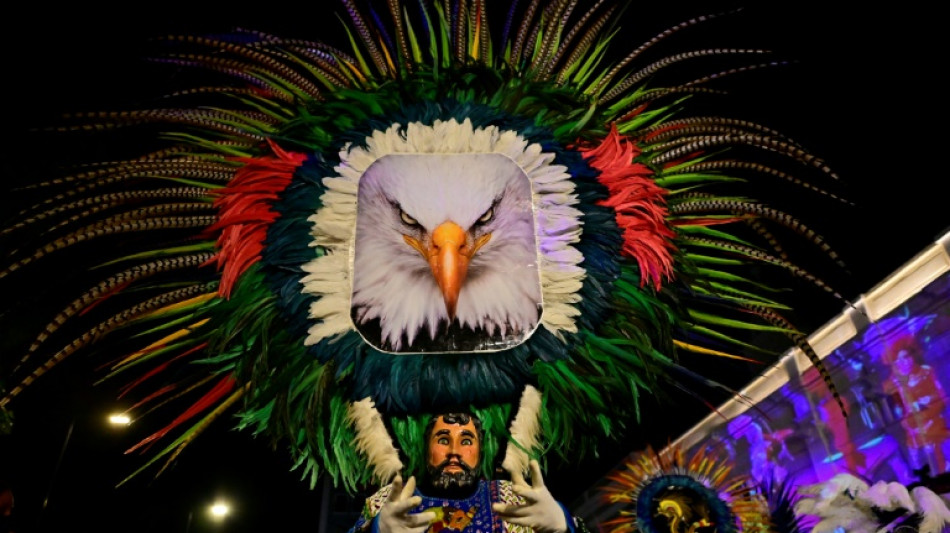
RBGPF
1.6500

Wearing flamboyant costumes and masks imitating blue-eyed, bearded Europeans, carnival-goers in Mexico have turned mocking colonizers into an art form.
The colorful celebration stands out from hundreds of other carnivals in Latin America by rekindling the spirit of revenge against erstwhile invaders.
Each year, men in wooden masks playing the role of light-skinned Europeans dance through the streets of Tlaxcala, one of Mexico's smallest states, located 120 kilometers (75 miles) east of the capital Mexico City.
Many sport carefully-trimmed beards resembling those of Spanish conquistador Hernan Cortes, while others have mustaches.
Participants in the photogenic festivities recreate the dandy style of the people who crossed the Atlantic to the New World.
Women wear the flowing dresses and elaborate hats of European ladies centuries ago.
The aim is to "mock the invaders... especially their customs and habits, which for the people of Tlaxcala were very effeminate," tourist guide Eduardo Cuautle Xochitemotl said beneath a mural depicting local history.
The feather-topped masks, hand-embroidered clothes and European-style costumes are a celebration of the cultural collisions that have shaped the region.
The Tlaxcalans allied with Cortes to capture the Aztec capital Tenochtitlan -- today Mexico City -- in 1521.
While their collaboration assured them certain privileges, the Tlaxcalans still faced exclusion by powerful Spanish landowners.
"At the time when we were conquered, the big haciendas held huge parties with music and dance, which we, the indigenous people, could not enter," said dancer Carlos Gomez Vazquez.
Another target of the mockery is the French influence that took root in the late 19th century under general-turned-president Porfirio Diaz, whose legacy can be seen today in Mexico City's Parisian-style architecture.
And in modern-day Mexico, centuries-old foes are not the only subjects of ridicule.
"Nowadays the tradition is to mock today's politicians," Xochitemotl said.
pp-ce-st-dr/md
G.Kuhn--NZN